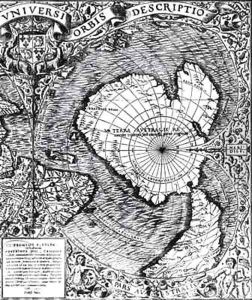Oronce Fine Paintings
Oronce Fine was a French mathematician and cartographer born on December 20, 1494, in Briançon, a small town in the French Alps. His father was a physician, which allowed Fine to receive a good education. He studied at the University of Paris, where he later became a professor of mathematics, teaching there for most of his life.
Fine's contributions to the field of mathematics were significant for his time. He wrote several books on arithmetic and geometry, and he was among the first to lecture on and promote the use of decimal fractions, which simplified calculations and measurements. Moreover, he was an early adopter of the Copernican heliocentric model of the solar system, which was a controversial stance before it gained wider acceptance in the scientific community.
In addition to his work in mathematics, Fine was an accomplished cartographer. He created numerous maps and globes, contributing to the body of knowledge during the Age of Discovery. His maps were known for their detail and artistic flair, and they often included elaborate decorations. One of Fine's most notable works was a cordiform (heart-shaped) projection map of the world in 1534, which was innovative for its time and influenced later mapmakers.
Fine's work extended to astronomy as well. He constructed an astronomical quadrant in the College of France and wrote about astronomical instruments. His passion for the stars was reflected in his cartography, where he often included celestial information in the borders of his maps.
Despite his accomplishments, Fine faced criticism and challenges during his career. Some of his works were met with skepticism, particularly his advocacy of the Copernican system. Nevertheless, he continued his scholarly pursuits until his death on August 8, 1555, in Paris. His legacy lived on through his maps and writings, which continued to be referenced and studied by scholars and explorers well after his passing.
